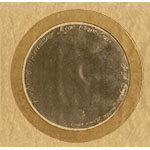The glass used to make optical elements (lenses, mirrors, prisms, etc.) must possess specific, well-defined optical and mechanical characteristics. But it must also be homogeneous and defect-free. The rough casts should not exhibit internal tensions, which could cause irreparable cracks in the finished element. For refracting elements (lenses and prisms), it is also particularly important to ensure they contain no bubbles—which can be caused by gas trapped in the glass during cooling—or any other type of inclusion. The lenses of the first telescopes, made of the ordinary glass of the period, often contained bubbles, inclusions, and unhomogeneous matter, sometimes in considerable proportions. It was only in the late 18th C., chiefly thanks to the Swiss Pierre Louis Guinand, that manufacturers were able to obtain disks of flint-glass (the high-refraction-index glass used to make the divergent element in achromatic objectives) that were sufficiently large, homogeneous, and defect-free.








